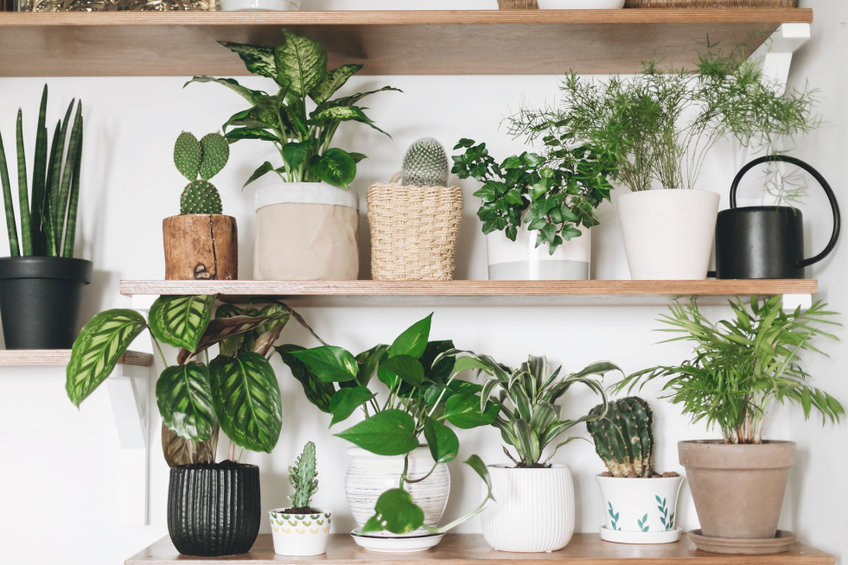Indoor plants not only add a touch of nature to your living space but also bring a sense of tranquility and improved air quality. With numerous options available, selecting the right indoor plants for your home can be an exciting yet challenging task. In this article, we’ll guide you through the process of choosing indoor plants that align with your lifestyle, aesthetics, and care capabilities.
Table of Contents
- Introduction
- Benefits of Indoor Plants
- Assessing Your Space
- Considering Light Conditions
- Low-Light Tolerant Plants
- Direct Sunlight Loving Plants
- Choosing Based on Maintenance
- Pet-Friendly Plant Options
- Plants for Air Purification
- Aesthetic Considerations
- Size and Placement
- Plant Pots and Containers
- Watering and Care Tips
- Dealing with Common Issues
- Conclusion
- FAQs
Introduction
Indoor plants have the power to transform any living space into a vibrant oasis. Their lush foliage and soothing presence can greatly enhance your home’s ambiance.
Benefits of Indoor Plants
Indoor plants offer more than just visual appeal. They also improve air quality by absorbing carbon dioxide and releasing oxygen. Studies have shown that having plants indoors can reduce stress, boost mood, and increase productivity.
Assessing Your Space
Before selecting plants, evaluate your living space. Consider the available floor space, windowsills, and shelving where you can place plants.
Considering Light Conditions
Different plants have varying light requirements. Understanding the light conditions in your home is crucial to selecting the right plants.
Low-Light Tolerant Plants
If your home has limited natural light, opt for plants like Snake Plant, ZZ Plant, or Peace Lily. These plants thrive in low-light environments.
Direct Sunlight Loving Plants
For spaces with ample sunlight, consider succulents, cacti, or a Fiddle Leaf Fig. Be sure to place them near windows where they can receive direct sunlight.
Choosing Based on Maintenance
Consider your commitment to plant care. Some plants require more attention than others. If you’re a beginner, start with low-maintenance options like Pothos or Spider Plant.
Pet-Friendly Plant Options
If you have pets, ensure the plants you choose are non-toxic to them. Spider plants, Boston Ferns, and Areca Palms are safe choices.
Plants for Air Purification
Indoor plants can contribute to better air quality. Plants like Aloe Vera, Snake Plant, and Peace Lily are known for their air-purifying properties.
Aesthetic Considerations
Select plants that match your home’s aesthetic. Whether you prefer modern minimalism or bohemian vibes, there’s a plant for every style.
Size and Placement
Consider the mature size of the plants you choose. Some plants can outgrow their spaces, leading to cramped living conditions.
Plant Pots and Containers
Choosing the right pots and containers is essential. Ensure they have drainage holes to prevent overwatering.
Watering and Care Tips
Overwatering is a common issue. Research the specific watering needs of your plants and create a watering schedule.
Dealing with Common Issues
Yellowing leaves, pests, and fungal diseases can affect indoor plants. Learn how to identify and address these problems promptly.
Conclusion
Bringing indoor plants into your home can significantly enhance its beauty and your well-being. By considering your space, light conditions, maintenance abilities, and aesthetic preferences, you can create a harmonious green haven indoors.
FAQs
- Can I place indoor plants in my bathroom? Yes, many plants thrive in the humid conditions of a bathroom, such as Boston Ferns and Orchids.
- How often should I fertilize my indoor plants? Fertilize your plants every 4-6 weeks during the growing season (spring and summer).
- What should I do if my plant’s leaves are turning brown at the edges? Browning leaf edges can indicate low humidity. Mist the plant regularly or use a humidifier.
- Do indoor plants attract insects? While some plants can attract insects, proper care and maintenance usually prevent infestations.
- Where can I buy indoor plants? You can find indoor plants at local nurseries, garden centers, or even online plant shops.
